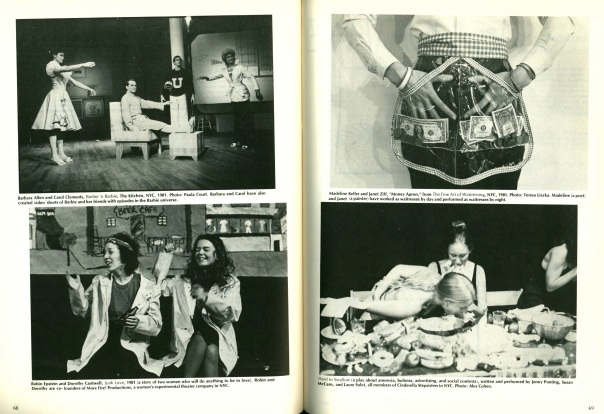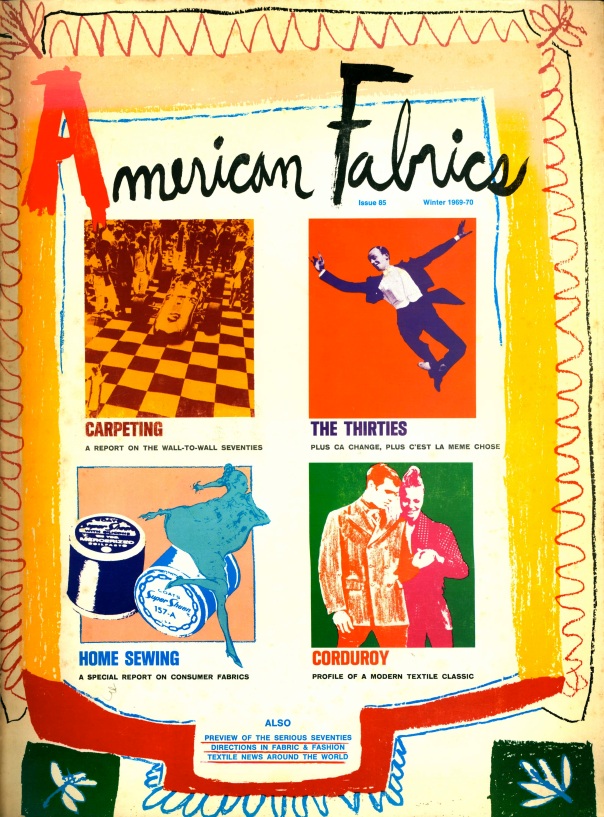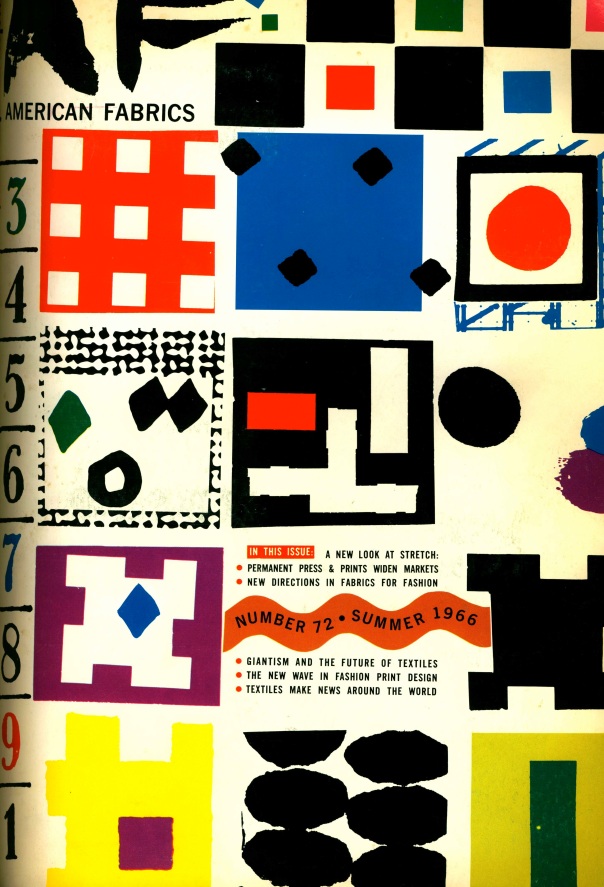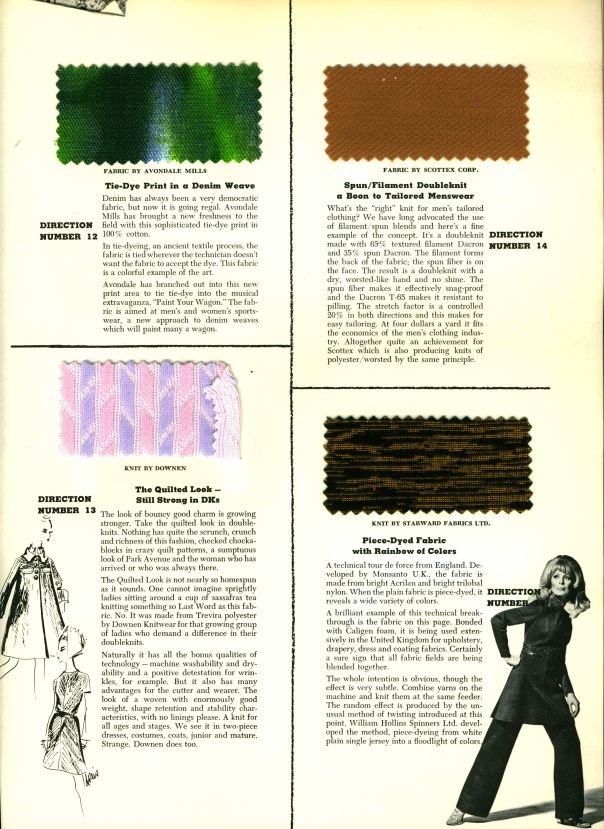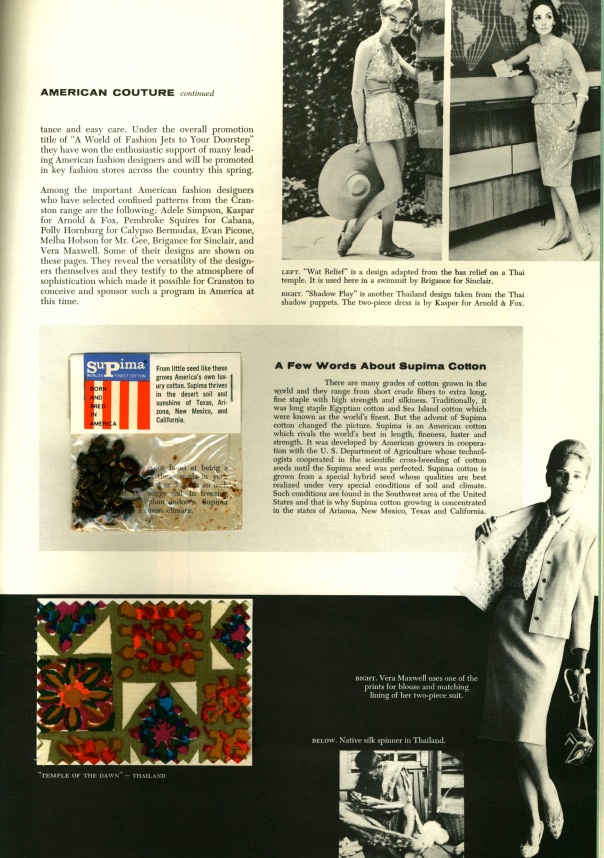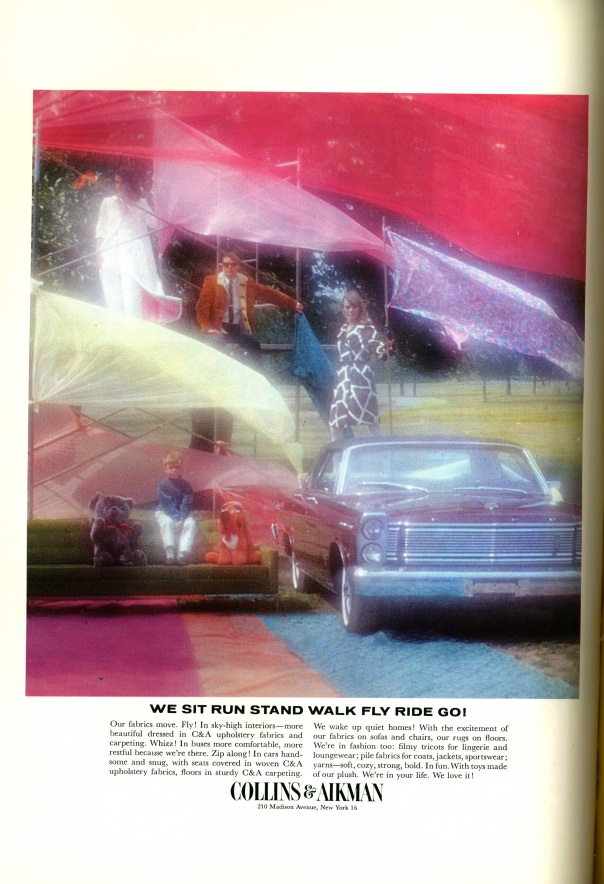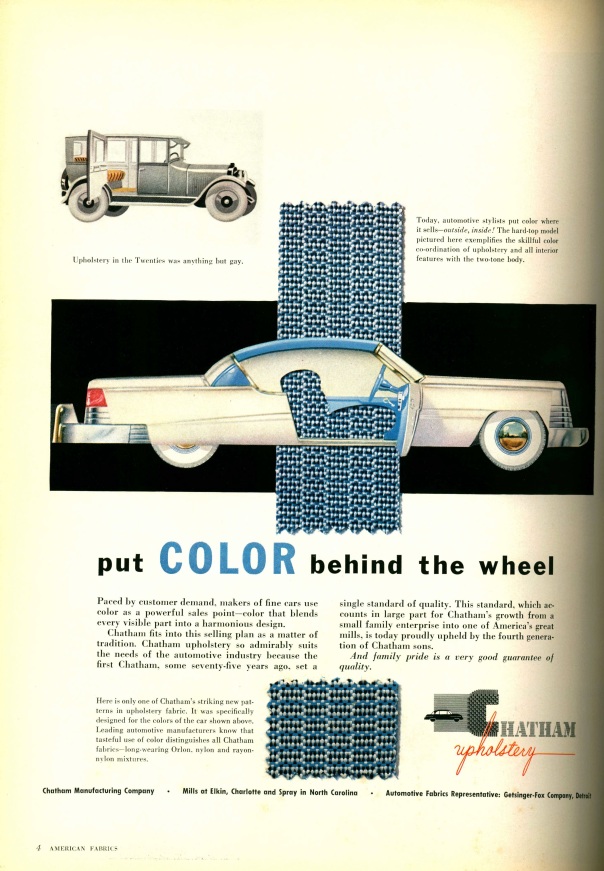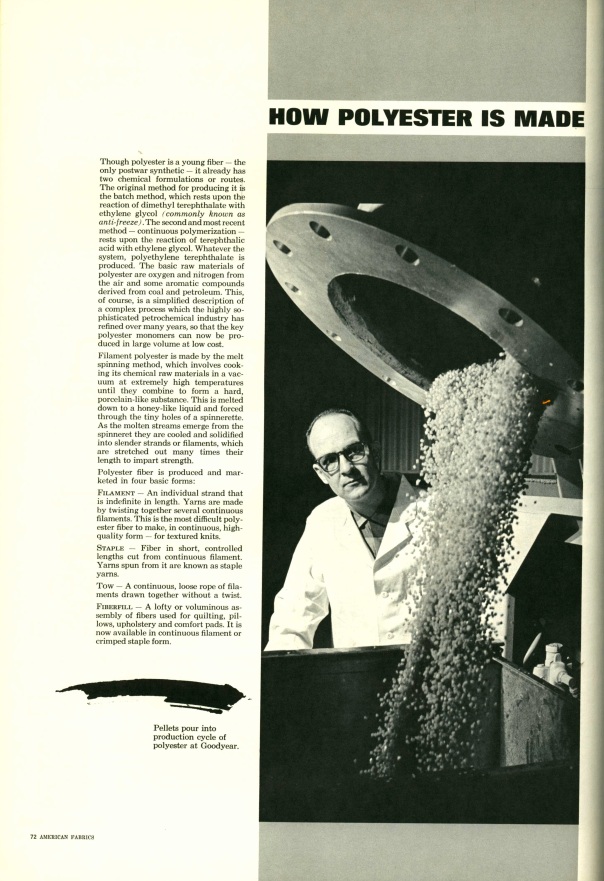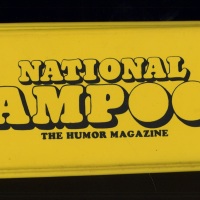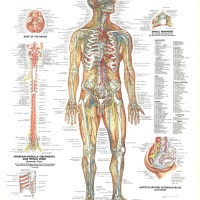Blog Archives
FiberArts
FiberArts features contemporary artists who work with fabric, weaving, sewing, dyes, textiles, embroidery, crochet, knitting, needlework and soft sculpture in order to produce works that boast both fine craftsmanship and fine art. Although expression and decoration with textiles is ancient, it was only fairly recently accepted in the fine arts world. The fibers revolution of the 1960’s led to a huge number of artists, both men and women, exploring and experimenting in a medium which was once labeled “women’s work” or pushed aside from the arts scene as mere craft.
In the library you will find 122 Issues of FiberArts from 1979 to the Summer 2011 issue, which was sadly the last.

FiberArts. November/December 1988.
Left: “Hanging Gardens of Babylon” by Anna Arbor. 1987. Saftey fence & Surveyor’s ribbon, woven and knotted.
Right: “The Neighborhood Nuisances” by Beth Holyoke. 1987. Ripstop Nylon & Applique.

FiberArts. November/December 1989.
Top: “Leopards” by Jean Hewes. 1988.
Bottom: “Edmond’s Fast Food” by Chris Wolf. 1989.

FiberArts. March/April 1982.
Machine-Knit garments by Betsy Lahaussios, Mickey Nushawg, Susanna Lewis, Jean Williams Cacicedo.

FiberArts. March/April 1982.
Left: detail of “Four in One” by Carole Beadle.
Right: detail of work by Lia Cook.

FiberArts. January/February 1983.
Top Left: Man’s Robe. Turkestan.
Top Right: “Charles Patless” by Pat Oleszko.
Bottom: “Stop and Go Dress” by Cynthia Pannucci.

FiberArts. January/February 1983.
Left to Right, Clockwise (Artists, not pictured): Jocelyn Turner, Judith Content, Judith Stein, Norma Rosen.

FiberArts. January/February 1983.
Clockwise from bottom left (artists, not pictured): Cate Fitt, Fraas/Slade, Yvonne Porcella, Ellen Haputli, Dina Knapp.
American Fabrics and Fashion
American Fabrics and Fashion (also called American Fabrics) was a commercial textile magazine created as a guide for manufacturers in the fabrics industry. In every issue there are dozens of physical fabric samples glued in, so in case you were wondering, “What did the 50’s feel like?”, here is the most literal answer to your question. Accompanying the samples are textile advertisements and sometimes the samples are even incorporated into the ads themselves. For anyone interested in fashion, textiles or all that is tactile, American Fabrics is a publication of great cultural and historical value.
We have 105 Issues of American Fabrics, 1946-1975.
Cinefantastique
From the official Cinefantastique website:
“During a decade when many mainstream critics were dismissing THE EXORICST as sadistic pornography, and when Forest J Ackerman was filling Famous Monsters with puny puns (e.g., “A Clockwork Lemon,” referring to a malfunctioning robot in FUTURE WORLD), publisher-editor Frederick S. Clarke created a little magazine with a big ambition: to cover the genre better than anybody, and to do it with all the seriousness of Cashier du Cinema, American Film, or Film Comment.”
 For anyone fascinated by sci-fi, fantasty, or horror films riding on big dreams and a tiny budget, Cinefantastique is a goldmine. The writers do not simply dismiss their subjects as many critics are apt to do with genre films, nor do they shower their subjects with praise as in a fanzine. Cinefantastique was composed with both the genuine passion of a devoted fan and the thoughtful insight of a critic, resulting in an engaging editorial. Interviews, critiques, and in-depth explorations of special effects and prosthesis are complimented by film stills and behind-the-scenes shots on every page. There are also fantastic full-color spreads throughout, framed by well-designed layouts and text. Feature articles are prodigiously in-depth and as such have left behind invaluable sources for research and admiration relating to dozens of seminal genre films. There are very few advertisements and most are beautifully painted film posters regardless, making the magazine all the more enjoyable to read.
For anyone fascinated by sci-fi, fantasty, or horror films riding on big dreams and a tiny budget, Cinefantastique is a goldmine. The writers do not simply dismiss their subjects as many critics are apt to do with genre films, nor do they shower their subjects with praise as in a fanzine. Cinefantastique was composed with both the genuine passion of a devoted fan and the thoughtful insight of a critic, resulting in an engaging editorial. Interviews, critiques, and in-depth explorations of special effects and prosthesis are complimented by film stills and behind-the-scenes shots on every page. There are also fantastic full-color spreads throughout, framed by well-designed layouts and text. Feature articles are prodigiously in-depth and as such have left behind invaluable sources for research and admiration relating to dozens of seminal genre films. There are very few advertisements and most are beautifully painted film posters regardless, making the magazine all the more enjoyable to read.
In 2000, Frederick Clarke, publisher since 1970, committed suicide. Mindfire Entertainment bought the magazine, renamed it “CFQ” and entirely remodeled its approach and aesthetic in an attempt to meet the demands of today’s consumer. In 2006 the last issue of CFQ was printed, and has been exclusively published online ever since.
In the periodicals section you will find 15 volumes of Cinefantastique beginning with the 4th volume, published in 1975, up until the final 2006 issue.










